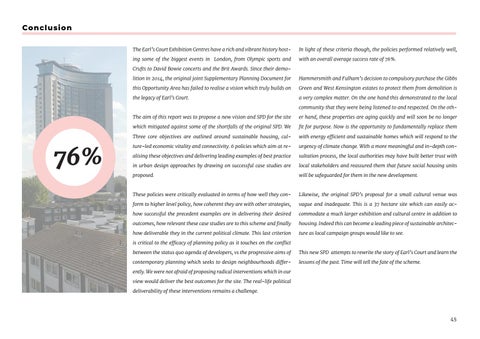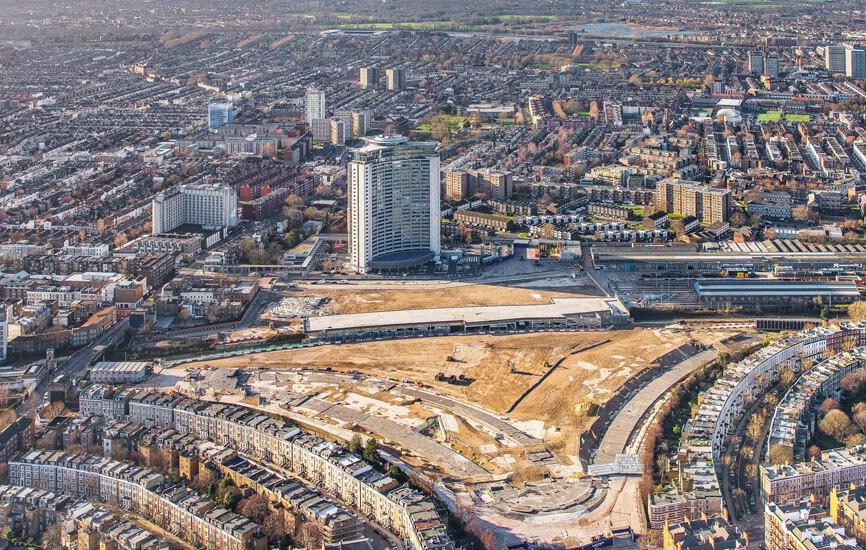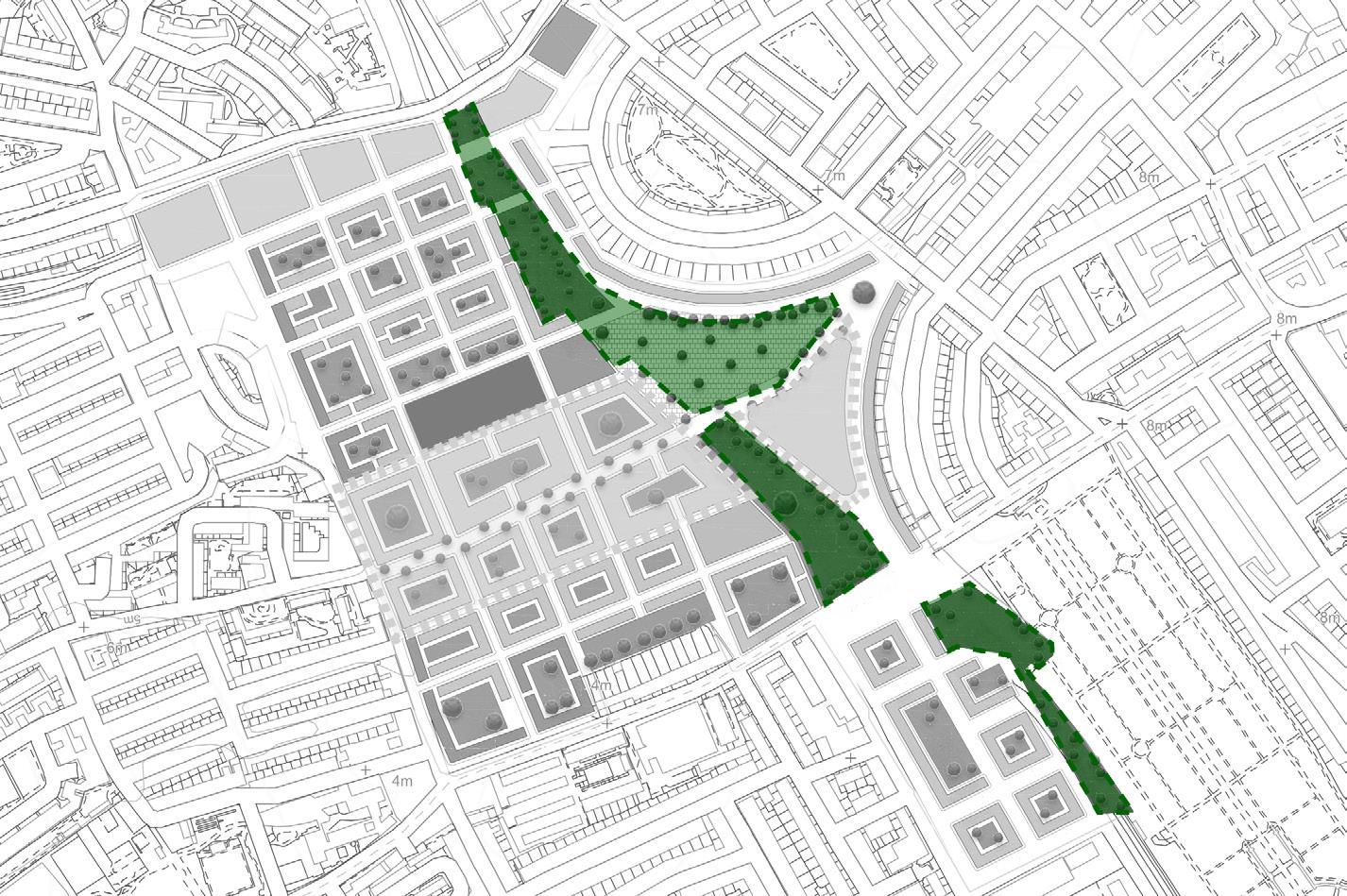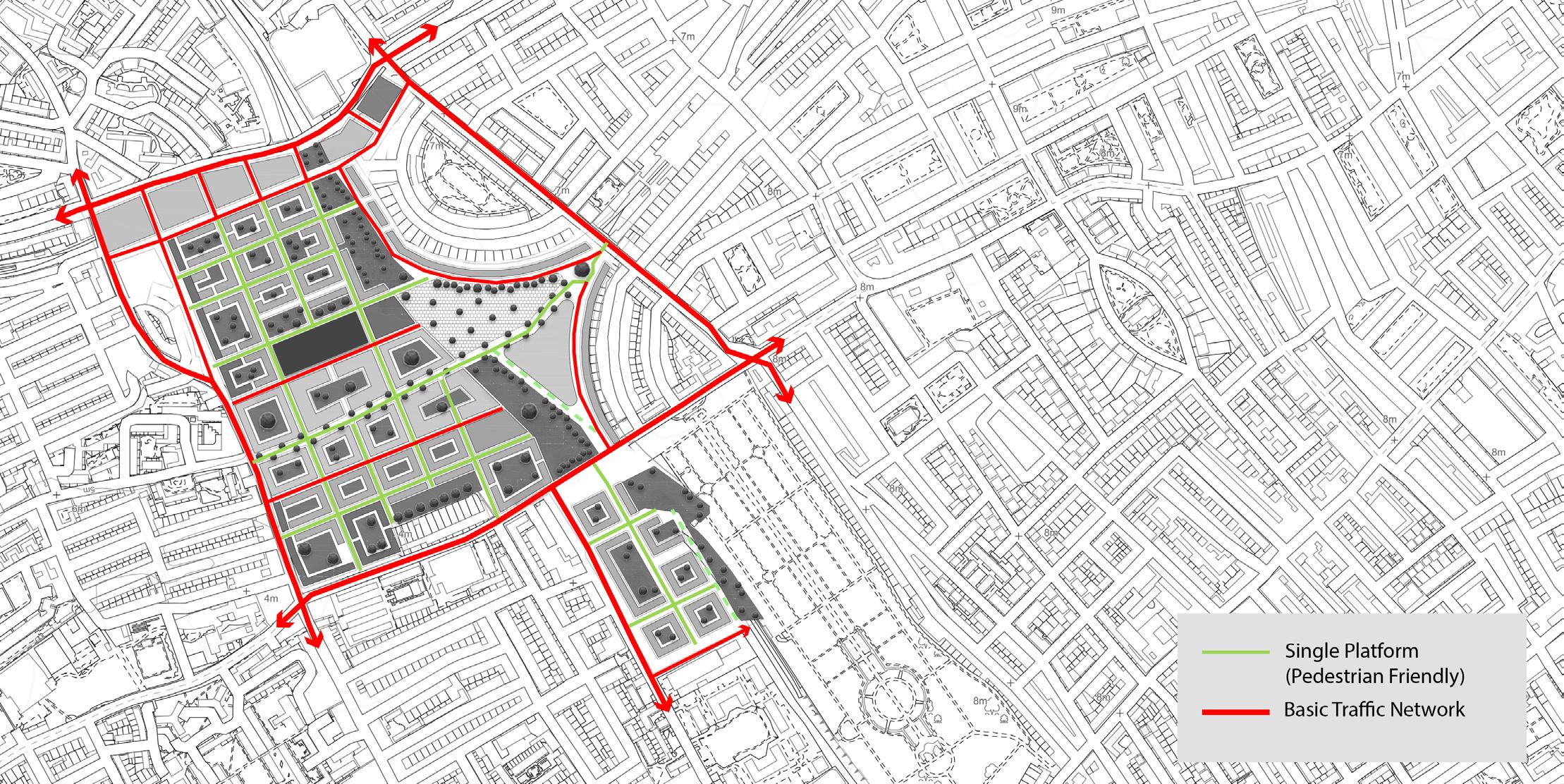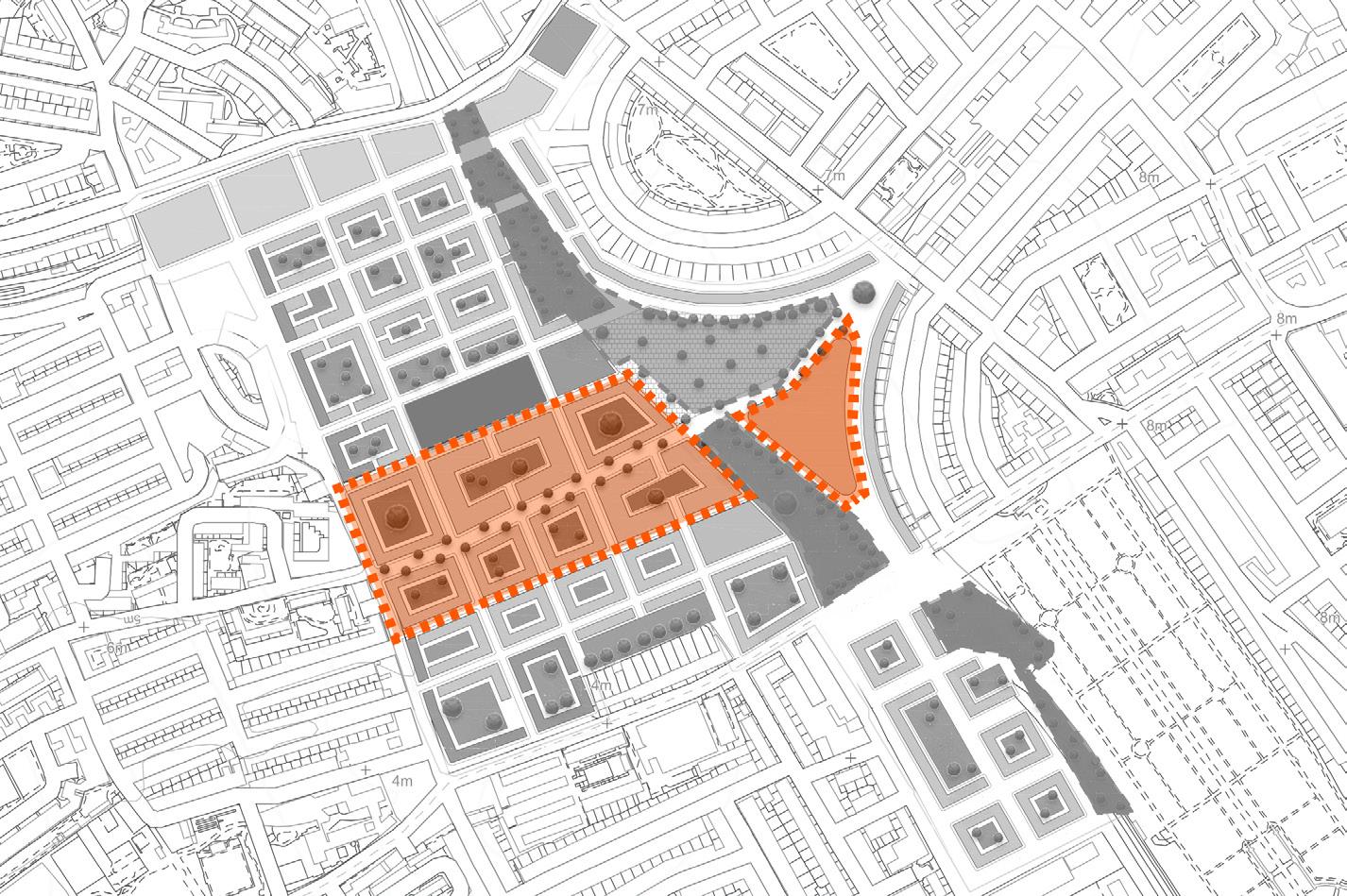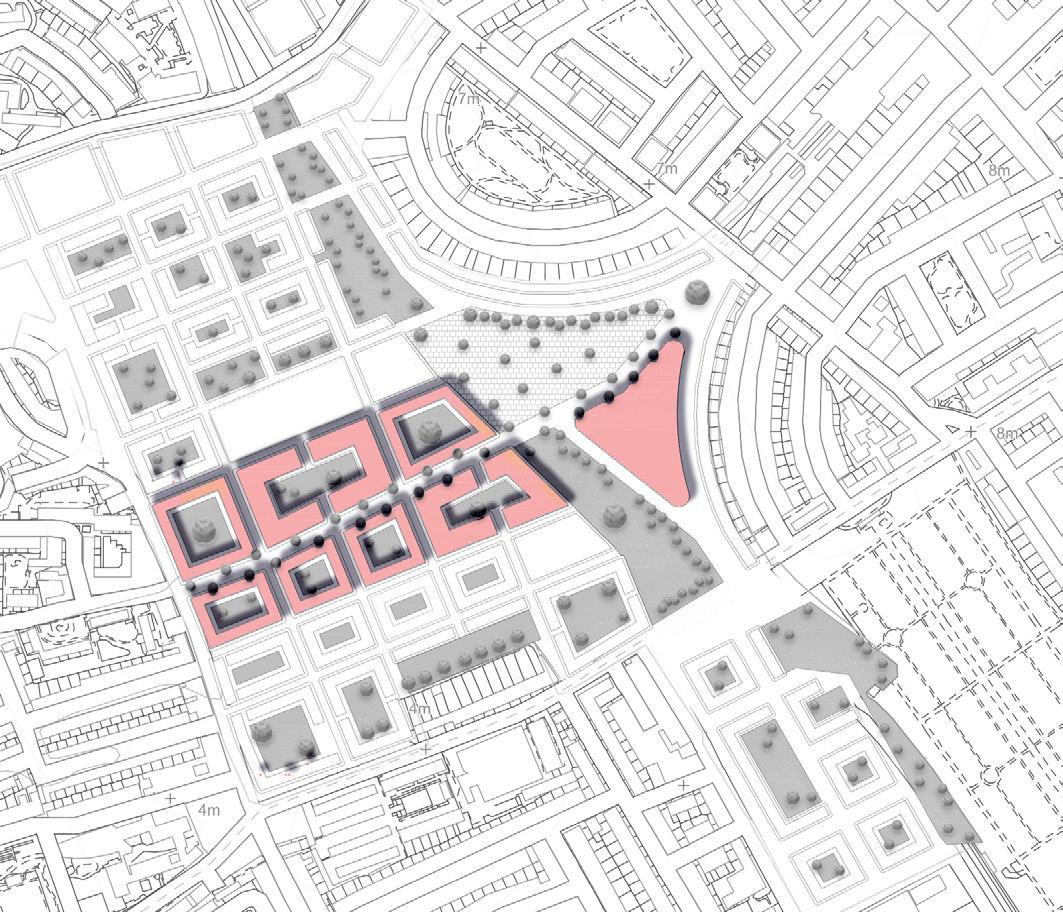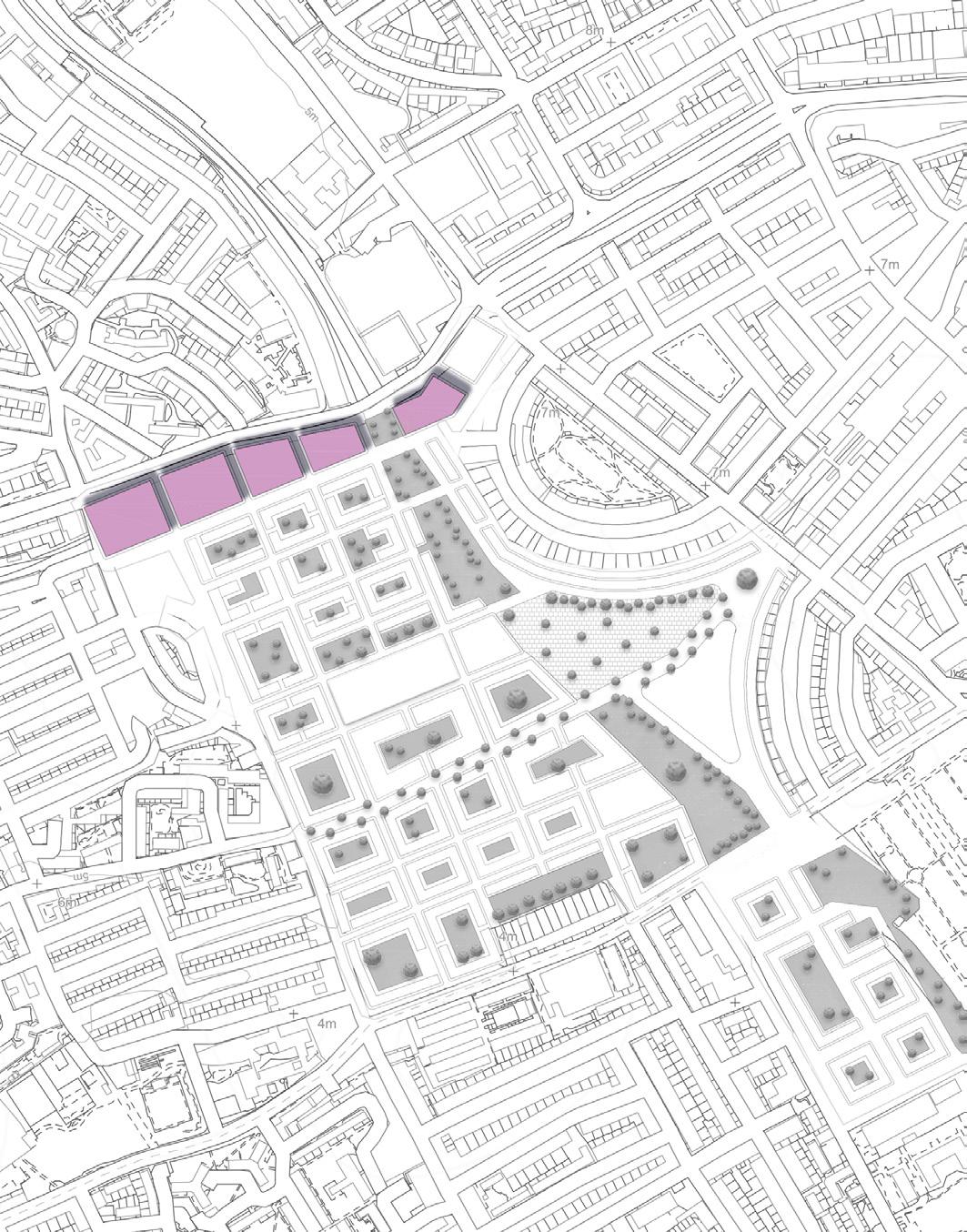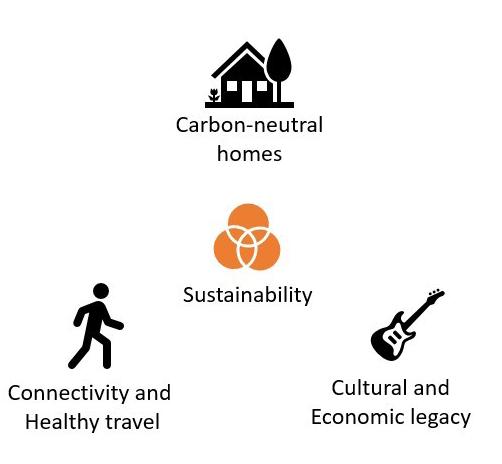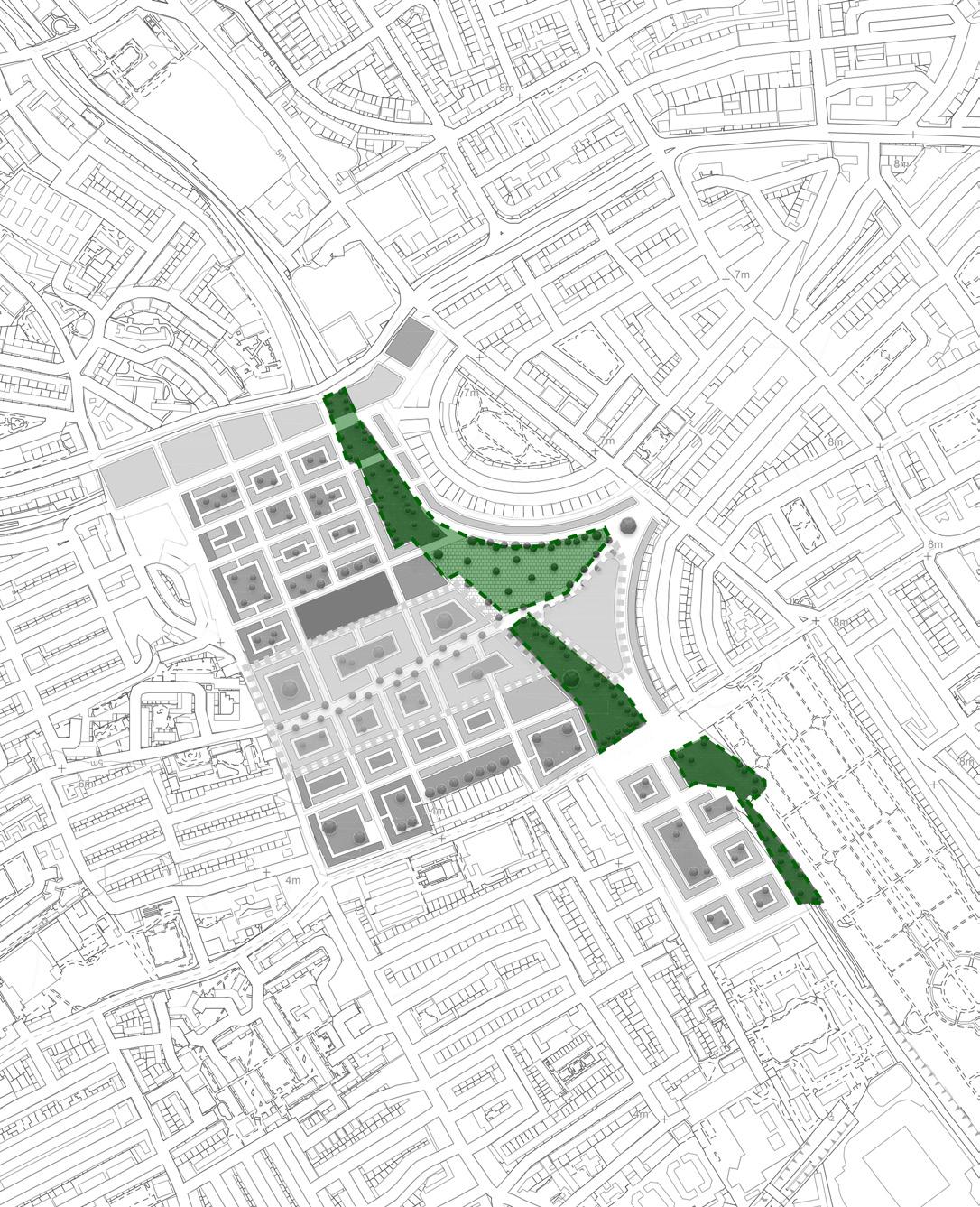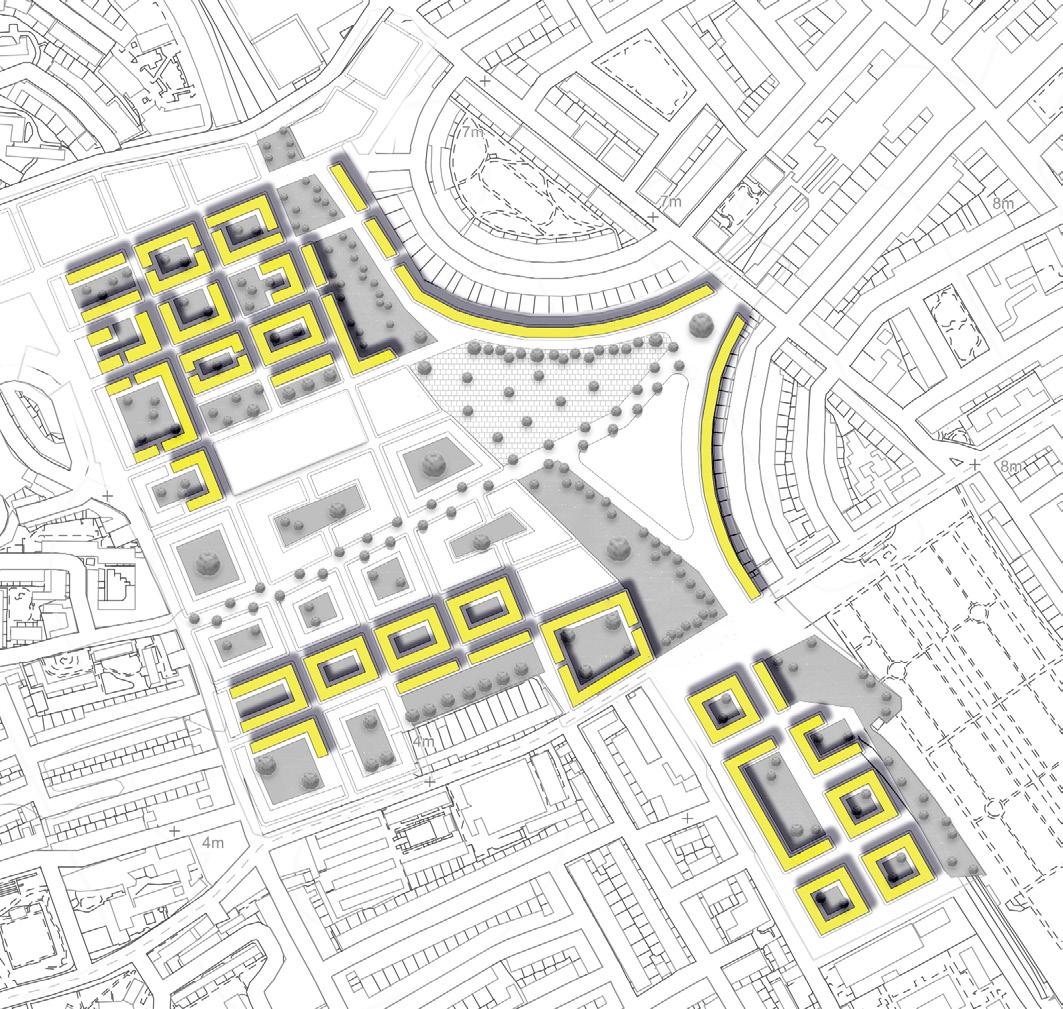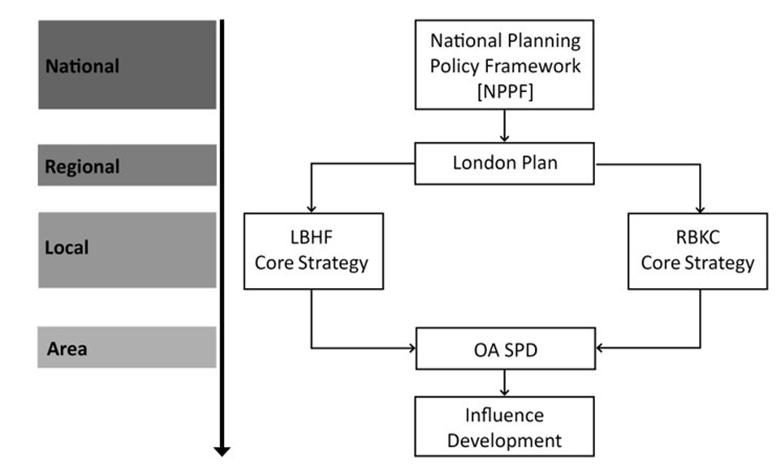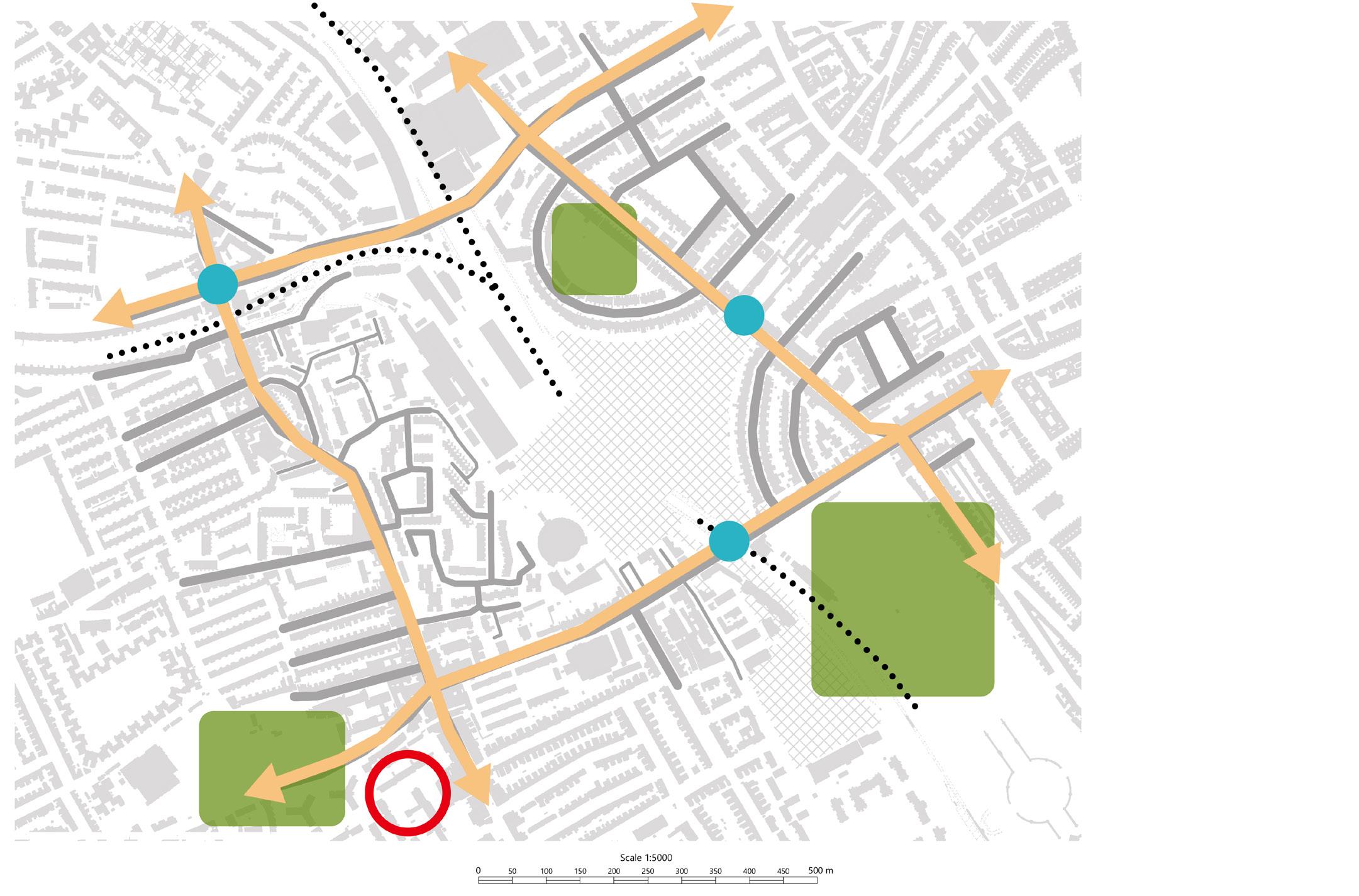Con clus io n The Earl’s Court Exhibition Centres have a rich and vibrant history host-
In light of these criteria though, the policies performed relatively well,
ing some of the biggest events in London, from Olympic sports and
with an overall average success rate of 76%.
Crufts to David Bowie concerts and the Brit Awards. Since their demolition in 2014, the original joint Supplementary Planning Document for
Hammersmith and Fulham’s decision to compulsory purchase the Gibbs
this Opportunity Area has failed to realise a vision which truly builds on
Green and West Kensington estates to protect them from demolition is
the legacy of Earl’s Court.
a very complex matter. On the one hand this demonstrated to the local community that they were being listened to and respected. On the oth-
76%
The aim of this report was to propose a new vision and SPD for the site
er hand, these properties are aging quickly and will soon be no longer
which mitigated against some of the shortfalls of the original SPD. We
fit for purpose. Now is the opportunity to fundamentally replace them
Three core objectives are outlined around sustainable housing, cul-
with energy efficient and sustainable homes which will respond to the
ture-led economic vitality and connectivity. 6 policies which aim at re-
urgency of climate change. With a more meaningful and in-depth con-
alising these objectives and delivering leading examples of best practice
sultation process, the local authorities may have built better trust with
in urban design approaches by drawing on successful case studies are
local stakeholders and reassured them that future social housing units
proposed.
will be safeguarded for them in the new development.
These policies were critically evaluated in terms of how well they con-
Likewise, the original SPD’s proposal for a small cultural venue was
form to higher level policy, how coherent they are with other strategies,
vague and inadequate. This is a 37 hectare site which can easily ac-
how successful the precedent examples are in delivering their desired
commodate a much larger exhibition and cultural centre in addition to
outcomes, how relevant these case studies are to this scheme and finally
housing. Indeed this can become a leading piece of sustainable architec-
how deliverable they in the current political climate. This last criterion
ture as local campaign groups would like to see.
is critical to the efficacy of planning policy as it touches on the conflict between the status quo agenda of developers, vs the progressive aims of
This new SPD attempts to rewrite the story of Earl’s Court and learn the
contemporary planning which seeks to design neighbourhoods differ-
lessons of the past. Time will tell the fate of the scheme.
ently. We were not afraid of proposing radical interventions which in our view would deliver the best outcomes for the site. The real-life political deliverability of these interventions remains a challenge.
45
